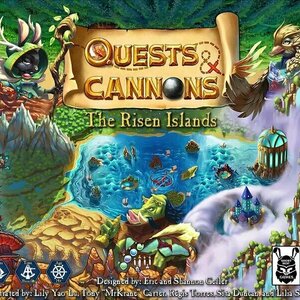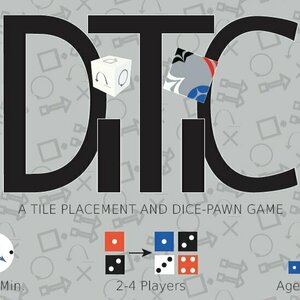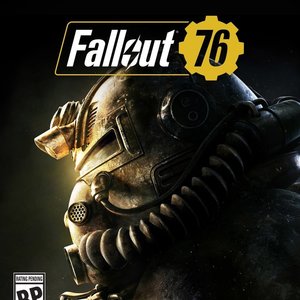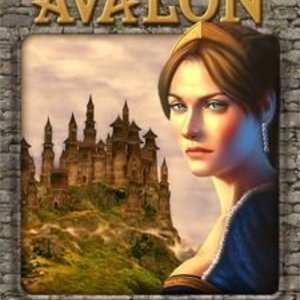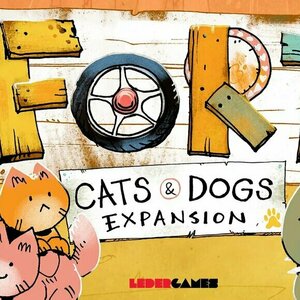Search
Search results

Catch the Ark
Games and Entertainment
App
Can you survive the jungle and Catch The Ark in this amazing former EDITOR'S CHOICE game? A flood...
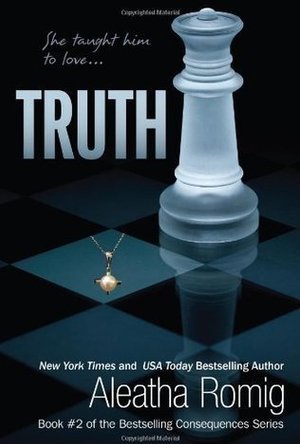
Truth (Consequences, #2)
Book
From New York Times and USA Today bestselling author Aleatha Romig comes the thrilling sequel in the...
Purple Phoenix Games (2266 KP) rated Point Salad in Tabletop Games
Nov 1, 2021
What does “elegant design” mean to you? For me, it is a game that has been well-fleshed out and the rules, components, and mechanics are not over-fluffed. I hear and see so many games being described as having elegant design, and I sit and ponder sometimes because I have played the game in question and it certainly doesn’t follow my personal interpretation of the term. Point Salad, however, is the perfect example of elegant design – to me. Follow along to learn how such a simple game can cause such great experiences.
Simply put, Point Salad is a tableau-building game where players are drafting cards with specific scoring rules and sets of the six different suits to maximize the scoring of their drafted score cards. Each card in the game is double-sided, with one side showing a vegetable and the other side showing a unique scoring system. The player who earns the most points at the end of the game will be the winner and be forced to eat a salad reflecting their drafted veggies from the game. All right, that isn’t true, but they CAN gloat as much as they please.
To setup, construct the deck as outlined in the rules per the number of players. Shuffle the deck and roughly divide into three stacks, point side up. From these stacks place out two cards, veggie side up, below them. Choose the first player and the harvesting may begin!
On a turn, the active player may choose to draft one point card or two veggie cards from those visible in the market. They now place the cards in their personal tableau in front of themselves and the turn moves to the next player. The game continues in this fashion of drafting one or two cards every turn until all cards have been drafted.
Once all cards are drafted from the market, players analyze their scoring cards and determine points using the veggie cards they drafted. As each point card depicts a unique scoring set, each player may end with wildly different score totals. The player with the most points is the winner!
Components. This one is easy. It’s a deck of 108 double-sided cards and a tiny set of rules. The cards are all great quality and feature the most clear and appropriate art by Dylan Mangini. I have grown to really love his artwork on different games – I really dig his style. Components in this one are wonderful and I am considering sleeving the game because I just want to keep it pristine through the years.
It is certainly no surprise that I adore this game. Honestly, I only even gave it a shot because my friend Bethany, of Ryan and Bethany Board Game Reviews, placed it in one of her Top 10 lists and I had oftentimes simply passed it up at the FLGS. I am super glad she turned me on to this one, as it is easily one of my new favorites to bring to the table. I do have one tiny issue with the game. The box reads for ages 8+ but my 5-year-old son has zero problems understanding and playing the game. I mean, I have to read (and sometimes explain) the point cards to him, but I love seeing him think about and work through some tactics while playing.
I think that for me and my family, Point Salad fills a nice little niche in my collection. It is an excellent introduction to both drafting and tableau-building that other games can build upon for us. I very much enjoy the possibility of never playing the same game twice as 108 double-sided cards offers such variability and replayability that I hope will keep the game from becoming boring over multiple plays. Right now, though, it is humming along for us, and we are so grateful to Miss Bethany for introducing us to this little gem! Purple Phoenix Games gives this one a delicious 5 / 6. If you are looking for that low-stress, but very tactical, card game for easygoing nights, pick yourself up a copy of Point Salad.
Simply put, Point Salad is a tableau-building game where players are drafting cards with specific scoring rules and sets of the six different suits to maximize the scoring of their drafted score cards. Each card in the game is double-sided, with one side showing a vegetable and the other side showing a unique scoring system. The player who earns the most points at the end of the game will be the winner and be forced to eat a salad reflecting their drafted veggies from the game. All right, that isn’t true, but they CAN gloat as much as they please.
To setup, construct the deck as outlined in the rules per the number of players. Shuffle the deck and roughly divide into three stacks, point side up. From these stacks place out two cards, veggie side up, below them. Choose the first player and the harvesting may begin!
On a turn, the active player may choose to draft one point card or two veggie cards from those visible in the market. They now place the cards in their personal tableau in front of themselves and the turn moves to the next player. The game continues in this fashion of drafting one or two cards every turn until all cards have been drafted.
Once all cards are drafted from the market, players analyze their scoring cards and determine points using the veggie cards they drafted. As each point card depicts a unique scoring set, each player may end with wildly different score totals. The player with the most points is the winner!
Components. This one is easy. It’s a deck of 108 double-sided cards and a tiny set of rules. The cards are all great quality and feature the most clear and appropriate art by Dylan Mangini. I have grown to really love his artwork on different games – I really dig his style. Components in this one are wonderful and I am considering sleeving the game because I just want to keep it pristine through the years.
It is certainly no surprise that I adore this game. Honestly, I only even gave it a shot because my friend Bethany, of Ryan and Bethany Board Game Reviews, placed it in one of her Top 10 lists and I had oftentimes simply passed it up at the FLGS. I am super glad she turned me on to this one, as it is easily one of my new favorites to bring to the table. I do have one tiny issue with the game. The box reads for ages 8+ but my 5-year-old son has zero problems understanding and playing the game. I mean, I have to read (and sometimes explain) the point cards to him, but I love seeing him think about and work through some tactics while playing.
I think that for me and my family, Point Salad fills a nice little niche in my collection. It is an excellent introduction to both drafting and tableau-building that other games can build upon for us. I very much enjoy the possibility of never playing the same game twice as 108 double-sided cards offers such variability and replayability that I hope will keep the game from becoming boring over multiple plays. Right now, though, it is humming along for us, and we are so grateful to Miss Bethany for introducing us to this little gem! Purple Phoenix Games gives this one a delicious 5 / 6. If you are looking for that low-stress, but very tactical, card game for easygoing nights, pick yourself up a copy of Point Salad.
Purple Phoenix Games (2266 KP) rated Quests & Cannons in Tabletop Games
May 17, 2021
Fantasy Yarharrr! The isles have been borne and offer wondrous resources, but only for one o’ ye. Gather yer factions and fight for control and survival, or suffer a fate worse than death… which, in this case, is extinction! Okay, this is way less dramatic, but the stakes are high when bunnies, eagles, and piggies battle on the high seas for control of the islands and assurance of their race’s survival.
Quests & Cannons is a giant melting pot of mechanics rolled up into a cute little package with an interesting modular board with multiple setup options. In it, players take control of one of the aforementioned animal races and board their ships to claim islands and exploit their resources. The first player to amass 15 or 20 prosperity (VP) by the end of the game will reign victorious!
DISCLAIMER: We were provided a prototype copy of this game for the purposes of this review. These are preview copy components, and I do not know for sure if the final components will be any different from these shown. Also, it is not my intention to detail every rule in the game, as there are just too many. You are invited to download the rulebook, back the game through the Kickstarter campaign, or through any retailers stocking it after fulfillment. -T
There are so many steps to setup, and about a thousand bits and pieces, so I will save both your eyes and my fingers explaining. However, once setup, it should look somewhat similar to the photo below. Each player receives their own upgradeable ship board to track resources, action points, and other game-necessary components, along with a specific character and matching boat token.
On a turn, players will have three action points they may spend in any order on the following actions: Movement, Gather, Attack. Movement is one nautical hex in any direction per action point used, unless a player uses one of their sails. Sails add one hex to a movement and is spent for the rest of the round. The thing to keep in mind with movement is that different tiles affect movement in different ways, so luckily reference cards are included in the game. Once a ship discovers a new island, the player receives one coin and a Quest card in addition to flipping over the question mark Island Feature Tokens. These tokens show specific resources, which Quest cards require to be completed, at specific locations on the board.
Players can spend an action point to Gather resources from an island. Players are able to fill up their ships’ holds with as much of the resource as they wish, and it can be replaced with other resources on future turns.
Map Clues are cards that can be worked on during play, similar to Quest cards, and usually require an action point to be spent. These are special circumstances, and the action points are not available to be spent on every turn. Similar special circumstances include visits to Outposts, Trading Posts, and Starting Spaces. These spaces allow players to buy and sell items, and upgrade and repair ships.
The last option for action point spending is by attacking. A player may Attack another player when they share the same space on the board. The attacking player spends an action point to fire their cannons equipped on their ship. The ammo is tracked and represented by ammo dice. Once rolled, the attacker scores hull damage for every four pips rolled. If the ship takes as many or more hull damage than they have HP hearts, their ship sinks. Fortunately, this does not eliminate the player, but they lose many resources and coins, and will need to respawn at their starting location.
The player who earns 15 or 20 prosperity (depending on game mode) from attacking players, completing Quest and Map Clue cards, and possibly some other secret methods, will win Quests & Cannons and leads their race to eternal glory!
Components. Again, this is a prototype copy of the game, but I’ll tell you what, if the finished project comes with even slightly better components, it will be a monumental accomplishment. This is one of the highest-quality home-made prototypes I have ever received. I know most art and many items are final, but everything is on the table for upgrades, with a successful Kickstarter campaign. The colors are great, the art is fantastical and amazing, and it looks phenomenal on the table. I really enjoy the different characters with their unique special powers, and the double-layer ship player mats. Everything has its place and is organized beautifully. I am very excited to see the final product that Short Hop Games achieves!
This kind of game is really right up my alley: head-to-head combat (without player elimination), exploration, and pick-up-and-deliver. The only thing this is missing to be the perfect Travis game is a deck building element, but that certainly wouldn’t fit here. Quests & Cannons is chocked full of mechanics that, I believe, work really well together to provide a great game experience without adding a ton of complexity. The hexploration is strong, and the pick-up-and-deliver mechanic is tasty. All the mechanics, components, and artwork synergize so well that I am surprised this is a title from first-time designers and publisher.
What I like most is that though the rules are plentiful, once you get them down you have a wonderfully fun versatile game that can be played with many different group permutations and modes. The variety in setup options are endless, and the rulebook offers nine or ten different setups. The game also comes with lots of extra map bits, so any player could dream up several unique setup options at any time. The Quests are great, and the Loot cards (though I didn’t mention them in the overview) offer lots of ways to improve players’ strategies. With the abundance of upgrades available and unique special powers, this one is a big winner for me.
If you are in the market for something a little different, with a great theme and interesting combination of mechanics, then Quests & Cannons is certainly worth a look. I am very excited to follow the progress and the campaign for this one. I think backers will be receiving an incredible game with excellent components and tons of replayability. Now to challenge my wife so she can mop the poop deck with me.
Quests & Cannons is a giant melting pot of mechanics rolled up into a cute little package with an interesting modular board with multiple setup options. In it, players take control of one of the aforementioned animal races and board their ships to claim islands and exploit their resources. The first player to amass 15 or 20 prosperity (VP) by the end of the game will reign victorious!
DISCLAIMER: We were provided a prototype copy of this game for the purposes of this review. These are preview copy components, and I do not know for sure if the final components will be any different from these shown. Also, it is not my intention to detail every rule in the game, as there are just too many. You are invited to download the rulebook, back the game through the Kickstarter campaign, or through any retailers stocking it after fulfillment. -T
There are so many steps to setup, and about a thousand bits and pieces, so I will save both your eyes and my fingers explaining. However, once setup, it should look somewhat similar to the photo below. Each player receives their own upgradeable ship board to track resources, action points, and other game-necessary components, along with a specific character and matching boat token.
On a turn, players will have three action points they may spend in any order on the following actions: Movement, Gather, Attack. Movement is one nautical hex in any direction per action point used, unless a player uses one of their sails. Sails add one hex to a movement and is spent for the rest of the round. The thing to keep in mind with movement is that different tiles affect movement in different ways, so luckily reference cards are included in the game. Once a ship discovers a new island, the player receives one coin and a Quest card in addition to flipping over the question mark Island Feature Tokens. These tokens show specific resources, which Quest cards require to be completed, at specific locations on the board.
Players can spend an action point to Gather resources from an island. Players are able to fill up their ships’ holds with as much of the resource as they wish, and it can be replaced with other resources on future turns.
Map Clues are cards that can be worked on during play, similar to Quest cards, and usually require an action point to be spent. These are special circumstances, and the action points are not available to be spent on every turn. Similar special circumstances include visits to Outposts, Trading Posts, and Starting Spaces. These spaces allow players to buy and sell items, and upgrade and repair ships.
The last option for action point spending is by attacking. A player may Attack another player when they share the same space on the board. The attacking player spends an action point to fire their cannons equipped on their ship. The ammo is tracked and represented by ammo dice. Once rolled, the attacker scores hull damage for every four pips rolled. If the ship takes as many or more hull damage than they have HP hearts, their ship sinks. Fortunately, this does not eliminate the player, but they lose many resources and coins, and will need to respawn at their starting location.
The player who earns 15 or 20 prosperity (depending on game mode) from attacking players, completing Quest and Map Clue cards, and possibly some other secret methods, will win Quests & Cannons and leads their race to eternal glory!
Components. Again, this is a prototype copy of the game, but I’ll tell you what, if the finished project comes with even slightly better components, it will be a monumental accomplishment. This is one of the highest-quality home-made prototypes I have ever received. I know most art and many items are final, but everything is on the table for upgrades, with a successful Kickstarter campaign. The colors are great, the art is fantastical and amazing, and it looks phenomenal on the table. I really enjoy the different characters with their unique special powers, and the double-layer ship player mats. Everything has its place and is organized beautifully. I am very excited to see the final product that Short Hop Games achieves!
This kind of game is really right up my alley: head-to-head combat (without player elimination), exploration, and pick-up-and-deliver. The only thing this is missing to be the perfect Travis game is a deck building element, but that certainly wouldn’t fit here. Quests & Cannons is chocked full of mechanics that, I believe, work really well together to provide a great game experience without adding a ton of complexity. The hexploration is strong, and the pick-up-and-deliver mechanic is tasty. All the mechanics, components, and artwork synergize so well that I am surprised this is a title from first-time designers and publisher.
What I like most is that though the rules are plentiful, once you get them down you have a wonderfully fun versatile game that can be played with many different group permutations and modes. The variety in setup options are endless, and the rulebook offers nine or ten different setups. The game also comes with lots of extra map bits, so any player could dream up several unique setup options at any time. The Quests are great, and the Loot cards (though I didn’t mention them in the overview) offer lots of ways to improve players’ strategies. With the abundance of upgrades available and unique special powers, this one is a big winner for me.
If you are in the market for something a little different, with a great theme and interesting combination of mechanics, then Quests & Cannons is certainly worth a look. I am very excited to follow the progress and the campaign for this one. I think backers will be receiving an incredible game with excellent components and tons of replayability. Now to challenge my wife so she can mop the poop deck with me.
Purple Phoenix Games (2266 KP) rated DiTiC in Tabletop Games
Oct 2, 2019
Purple Phoenix Games Preview
Abstract strategy games hold a special place in my heart. I’m not really a fan of Chess, but I am a fan of games that are light on rules and components but heavier in strategy needed to best your opponents. Yes, I like games that have zombies and gore or adventure and treasures as well, but abstracts are a great escape from those Ameritrashy games we all love.
So my original thought was to try to open this preview with a dastardly abstract statement to truly emphasize how theming is irrelevant with some activities. Not quite having done that, DiTiC is an abstract strategy game of “tile placement and dice-pawn” movement. How does it play? Read on.
In DiTiC the winner is the first player to upgrade one of their dice from a smaller-valued die into a value of six. Bring out smaller value dice and move them around the “board” to combine with other dice and win the game!
DISCLAIMER: We were provided a review copy of this game for the purposes of this review. These are preview copy components, and I do not know if the final components will be similar or different, or if the Kickstarter campaign will alter or add anything through stretch goals. -T
To setup a game of DiTiC, each player chooses a color of dice and takes all dice into their hand. The tile with “DiTiC START” on it is the, well, starting tile and is placed in the middle of the table. Roll off to see who goes first and you are ready to play!
On a turn a player may draw and place a tile or move one of their dice. Players start with zero dice on the board, so the first few turns will be drawing a tile from the bag and placing it on the board either side face-up. As you can see from the photos the tiles will have different colored (and shaped) corners. It’s when these corners complete an intersection of four tile corners that dice may enter the board. Depending on the color of the intersection’s majority control a die of said majority color comes into play on the value of the number of icons present. That’s a mouthful. So there are four corners to the intersection. If said intersection contains two red, a blue, and a black icon then red will place a die with value of two pips showing on that intersection. These dice may now be moved and combined with like-valued dice (with an exception). If a player has at least one die on the board when initiating this action, they may roll the action die after placement and complete any other actions the die result allows.
When a player decides instead to move, combine, or overtake a die, they simply move the die along the edge of a tile to the next closest intersection. Exception to movement: players can move all dice with a value of one BEFORE any other dice movement, and dice with value of one or two may move in any direction – even diagonally.
To combine/upgrade dice players will need to move one die into the same intersection as an equal-valued die in order to combine into a die of value +1. Example: a four die and a four die combine to make a five die. Exception to combinations: a value one die may combine with a value three die (remember the exception from the previous paragraph?) to create a value four die.
To overtake an opponent’s die, a player simply moves a superior die onto an occupied intersection. Typically, a die of larger value can overtake any die of smaller value. Exceptions: nothing may overtake a four or five, and only a five can overtake a three. Three-value dice seem to be the superheros of DiTiC.
So after many back-and-forth turns of placing tiles and rolling dice or moving/combining/overtaking dice the winner is crowned once they have upgraded any die into a value six die.
Components. Again, this is a prototype version of the game, so I will comment on what I can. I think the game looks very nice, even in this stage of production. The icons on the tiles are clear – and THANK YOU for considering the colorblind gamer community by making each icon different by both color and art style. The dice are your typical d6 (and I do not know if there will be any changes made to these as a result of a successful campaign). The icons on the action die make sense and I really dig the laser-etched wooden design, and I kinda hope that detail makes it into the final product. But I prefer wooden dice to plastic every time. The game also came with a burlap bag to house and conceal the tiles, and coupled with the wooden dice makes a nice little natural organic combo. My only request for the final version of the game? Go crazy with the color scheme. Black, red, white, and blue are great colors, but fling out the purple and the gold and the orange and the aqua. But I’m no designer. It looks great as it is.
So like I said up top, I love abstracts. Surprisingly so. The more I play them the more I love them. And this game definitely adds to my love of the genre. The rules are kinda wacky, and the dice of different values each can do their own thing, and I think that’s really interesting. It’s not simply a game of moving big dice around eating all the little dice. I mean, you CAN do that, but you will not advance your own strategies. But there is an amount of take that in this game, from the action dice to the tile placement to the overtaking of dice, that will really appeal to lots of people. It’s not a big game, but it looks great on the table, and plays really well once you have immersed yourself in the rules. I really believe that the more I play it the more I will fall in love with it. In fact, as I type this I want to go home and play it right now. And that’s a mark of a good, if not great, game, isn’t it?
If you like abstract strategy games and have a little room for this small game in your collection (or better, MAKE some room for it) then you should definitely consider backing it on Kickstarter, or (depending on when you read this) picking it up at your FLGS.
So my original thought was to try to open this preview with a dastardly abstract statement to truly emphasize how theming is irrelevant with some activities. Not quite having done that, DiTiC is an abstract strategy game of “tile placement and dice-pawn” movement. How does it play? Read on.
In DiTiC the winner is the first player to upgrade one of their dice from a smaller-valued die into a value of six. Bring out smaller value dice and move them around the “board” to combine with other dice and win the game!
DISCLAIMER: We were provided a review copy of this game for the purposes of this review. These are preview copy components, and I do not know if the final components will be similar or different, or if the Kickstarter campaign will alter or add anything through stretch goals. -T
To setup a game of DiTiC, each player chooses a color of dice and takes all dice into their hand. The tile with “DiTiC START” on it is the, well, starting tile and is placed in the middle of the table. Roll off to see who goes first and you are ready to play!
On a turn a player may draw and place a tile or move one of their dice. Players start with zero dice on the board, so the first few turns will be drawing a tile from the bag and placing it on the board either side face-up. As you can see from the photos the tiles will have different colored (and shaped) corners. It’s when these corners complete an intersection of four tile corners that dice may enter the board. Depending on the color of the intersection’s majority control a die of said majority color comes into play on the value of the number of icons present. That’s a mouthful. So there are four corners to the intersection. If said intersection contains two red, a blue, and a black icon then red will place a die with value of two pips showing on that intersection. These dice may now be moved and combined with like-valued dice (with an exception). If a player has at least one die on the board when initiating this action, they may roll the action die after placement and complete any other actions the die result allows.
When a player decides instead to move, combine, or overtake a die, they simply move the die along the edge of a tile to the next closest intersection. Exception to movement: players can move all dice with a value of one BEFORE any other dice movement, and dice with value of one or two may move in any direction – even diagonally.
To combine/upgrade dice players will need to move one die into the same intersection as an equal-valued die in order to combine into a die of value +1. Example: a four die and a four die combine to make a five die. Exception to combinations: a value one die may combine with a value three die (remember the exception from the previous paragraph?) to create a value four die.
To overtake an opponent’s die, a player simply moves a superior die onto an occupied intersection. Typically, a die of larger value can overtake any die of smaller value. Exceptions: nothing may overtake a four or five, and only a five can overtake a three. Three-value dice seem to be the superheros of DiTiC.
So after many back-and-forth turns of placing tiles and rolling dice or moving/combining/overtaking dice the winner is crowned once they have upgraded any die into a value six die.
Components. Again, this is a prototype version of the game, so I will comment on what I can. I think the game looks very nice, even in this stage of production. The icons on the tiles are clear – and THANK YOU for considering the colorblind gamer community by making each icon different by both color and art style. The dice are your typical d6 (and I do not know if there will be any changes made to these as a result of a successful campaign). The icons on the action die make sense and I really dig the laser-etched wooden design, and I kinda hope that detail makes it into the final product. But I prefer wooden dice to plastic every time. The game also came with a burlap bag to house and conceal the tiles, and coupled with the wooden dice makes a nice little natural organic combo. My only request for the final version of the game? Go crazy with the color scheme. Black, red, white, and blue are great colors, but fling out the purple and the gold and the orange and the aqua. But I’m no designer. It looks great as it is.
So like I said up top, I love abstracts. Surprisingly so. The more I play them the more I love them. And this game definitely adds to my love of the genre. The rules are kinda wacky, and the dice of different values each can do their own thing, and I think that’s really interesting. It’s not simply a game of moving big dice around eating all the little dice. I mean, you CAN do that, but you will not advance your own strategies. But there is an amount of take that in this game, from the action dice to the tile placement to the overtaking of dice, that will really appeal to lots of people. It’s not a big game, but it looks great on the table, and plays really well once you have immersed yourself in the rules. I really believe that the more I play it the more I will fall in love with it. In fact, as I type this I want to go home and play it right now. And that’s a mark of a good, if not great, game, isn’t it?
If you like abstract strategy games and have a little room for this small game in your collection (or better, MAKE some room for it) then you should definitely consider backing it on Kickstarter, or (depending on when you read this) picking it up at your FLGS.
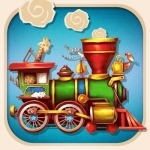
Ticket to Ride: First Journey
Games
App
"***It looks like Days of Wonder has come up with a solution to my problem with the introduction of...
Sheridan (209 KP) rated the Xbox One version of Fallout 76 in Video Games
Dec 29, 2018
Challenging Gameplay (3 more)
Huge Open World
Ability to Modify Items
CAMP Set Up
Tragic Graphics (4 more)
Online Only
No Dogmeat :(
STASH box limit
Feels Repetitive
A Game to End an Epic Series?
Let's face it - there's a lot of Fallout fans out there and these fans have a whole heap to say about this game. The big question is - is this a game for the fans? Not really, no. I don't *hate* it, but I'm not totally on board with it either. Now I've been playing the Fallout games for a very long time, I've completed both Fallout 3 and Fallout New Vegas serveral times and have completed the majority of Fallout 4 too. Fallout 76 is just - not a good game. There are aspects I quite like - the CAMP, the STASH boxes littered around so you don't have to fast travel all the time, the ability to modify weapons and amour, the huge open world to explore - I like all of that. What I hate is that it just doesn't feel like a Fallout game, the storyline just isn't there - I don't just start playing and realise literal hours have passed. There's no NPCs, no companions and worst of all there's no Dogmeat. I mean, sure other companions I understand, it's an online only game, I can see how running around with a crew could become combersome but - I miss my doggo! I can't stand that it's online only - sure give us the option to but I've never been a fan of being forced to play online, I game to relax, not to interact with others - plus no pause is extremely annoying. The graphics are terrible considering what other companies have come out with in 2018, it feels like FO3 graphics. The limit on the STASH box is currently 600lbs but mine is full and I keep having to get rid of stuff that I actually need. The repetitive going back and forth on missions and having to travel from one side of the map to the other while doing a mission is extremely frustrating, especially considering you're pretty much always carrying too much stuff (you literally need a ton of weapons, ammo, food & water to survive).
Overall I don't love it, but I don't hate it.
In short;
Was it worth the $120 preorder price? F**k no.
Is it something I'll play complusively until I've done everything?
No.
Does it ensare you and leave you excited to play again?
No.
Does it exceed Bethesda's big exciting lead up to release?
Certainly not.
Is it the worst game ever?
No, not really.
Is it truly a Fallout game?
Nope.
Does it feel like a dodgy, half-assed turd that the developers crapped out to make money?
Why, yes, yes it does.
Is it a game for Fallout fans?
Maybe, if you're into online play with friends then I guess? If you look past all the bugs, the sub-par graphics and the dull unimaginative storyline sure, this might be a game for you.
Would I recommend it?
No, not unless it's in the $20 bin at EB and you have literally NOTHING else to play.
I'm just saying if this game were a puddle, I could stand in it bare foot and not get my feet wet - that's how much depth it has...
It isn't the *worst* thing I've spent money on (Technomancer takes that spot with Recore as a close second), but it's definitely not something to play if you're a Fallout fan. Just stick to the old stuff, it's waaaay better...
Overall I don't love it, but I don't hate it.
In short;
Was it worth the $120 preorder price? F**k no.
Is it something I'll play complusively until I've done everything?
No.
Does it ensare you and leave you excited to play again?
No.
Does it exceed Bethesda's big exciting lead up to release?
Certainly not.
Is it the worst game ever?
No, not really.
Is it truly a Fallout game?
Nope.
Does it feel like a dodgy, half-assed turd that the developers crapped out to make money?
Why, yes, yes it does.
Is it a game for Fallout fans?
Maybe, if you're into online play with friends then I guess? If you look past all the bugs, the sub-par graphics and the dull unimaginative storyline sure, this might be a game for you.
Would I recommend it?
No, not unless it's in the $20 bin at EB and you have literally NOTHING else to play.
I'm just saying if this game were a puddle, I could stand in it bare foot and not get my feet wet - that's how much depth it has...
It isn't the *worst* thing I've spent money on (Technomancer takes that spot with Recore as a close second), but it's definitely not something to play if you're a Fallout fan. Just stick to the old stuff, it's waaaay better...
Purple Phoenix Games (2266 KP) rated The Resistance: Avalon in Tabletop Games
Jun 12, 2019
Do you appreciate your friends and your relationships with them? If so, please read no further. Do you want to dissolve your friendships and cause your family members to wonder what went wrong with you and never trust you again? Play The Resistance: Avalon with them.
The Resistance: Avalon (which we always just refer to as simply Avalon) is a game of hidden roles played over several rounds where the “good guys” from King Arthur’s court are pitted against the “bad guys” in Mordred’s thrall. The number of players at the table determines the number of players to be assigned to the good and bad guys squads and the required goals for victory for each team.
To begin, role cards are divvied up and players secretly find out which team they are on for the game. Blue background cards are good guys, red are bad guys. ALERT! Yes, already. I cannot tell you how many times games have been voided because a player was not quite sure what team they were on, so make sure your players know what’s up before continuing. From here a narrator player reads the script in the rulebook to give instructions to players with their eyes closed (a la Mafia or Werewolf). This allows different members of each team to know certain information about their own team or even the opposite team. Players are then instructed to open their eyes simultaneously and thus begins the game of facades.
A player is chosen at random to be the quest giver for now. This person then assigns other players to go on a quest. The “quest” is just a generic quest where it will either succeed or fail. Once the quest giver has made their choices, everyone at the table has a chance to vote to approve the quest team or deny the quest team. Simple majority vote wins. If the team is approved, the quest happens. If the team is denied, the next player in the circle becomes the quest giver and must create a new team of players to go questing.
Once approved, the quest team players are each given two cards: Success and Fail. Secretly, under the table works best, the players make their choices. ALERT! All good guys MUST CHOOSE SUCCESS CARDS so the quest can succeed. Bad guys can choose either one. The questers then pass their cards to an uninvolved player who will then shuffle the cards without looking at them. Once completed, the cards are revealed and thus the success or failure of the quest. If all cards are Success, then the quest was a success and the good guys mark this on the main board. If even just one Fail card appears the quest fails and the bad guys mark it on the main board. This continues until either the good guys win or the bad guys claim victory!
Components. The box is small (akin to the Tiny Epic size boxes). I’m not sure if the game comes with an insert because I won mine from a BGG auction. The cards included in the game are fine, and I sleeved mine because they get held quite a bit. The other miscellaneous tokens are nice and do the job well. This is a game that is less reliant on components, and much more so on game play.
If my intro seemed dark a foreboding, it was completely intentional. Have I witnessed friendships dissolving as a result of this game? Ok not entirely, but there have been some pretty amazing head turns and surprise reveals coupled with slapping and yelling. Not me, mind you, but others. In any case, this game is definitely one to check out if you are a fan of hidden role games and if you want to add tons of tension to your game night. I honestly have no idea why this game (or its older sibling The Resistance if you are more into that theme) isn’t in every game collection. Yes, I know, there are now TONS of hidden role games out there. But this is my favorite of the lot. By far.
We at Purple Phoenix Games are split somehow, giving this one 18 / 24. Obviously it is because Josh is a minion of Mordred and wants our review to fail.
https://purplephoenixgames.wordpress.com/2019/04/24/the-resistance-avalon-review/
The Resistance: Avalon (which we always just refer to as simply Avalon) is a game of hidden roles played over several rounds where the “good guys” from King Arthur’s court are pitted against the “bad guys” in Mordred’s thrall. The number of players at the table determines the number of players to be assigned to the good and bad guys squads and the required goals for victory for each team.
To begin, role cards are divvied up and players secretly find out which team they are on for the game. Blue background cards are good guys, red are bad guys. ALERT! Yes, already. I cannot tell you how many times games have been voided because a player was not quite sure what team they were on, so make sure your players know what’s up before continuing. From here a narrator player reads the script in the rulebook to give instructions to players with their eyes closed (a la Mafia or Werewolf). This allows different members of each team to know certain information about their own team or even the opposite team. Players are then instructed to open their eyes simultaneously and thus begins the game of facades.
A player is chosen at random to be the quest giver for now. This person then assigns other players to go on a quest. The “quest” is just a generic quest where it will either succeed or fail. Once the quest giver has made their choices, everyone at the table has a chance to vote to approve the quest team or deny the quest team. Simple majority vote wins. If the team is approved, the quest happens. If the team is denied, the next player in the circle becomes the quest giver and must create a new team of players to go questing.
Once approved, the quest team players are each given two cards: Success and Fail. Secretly, under the table works best, the players make their choices. ALERT! All good guys MUST CHOOSE SUCCESS CARDS so the quest can succeed. Bad guys can choose either one. The questers then pass their cards to an uninvolved player who will then shuffle the cards without looking at them. Once completed, the cards are revealed and thus the success or failure of the quest. If all cards are Success, then the quest was a success and the good guys mark this on the main board. If even just one Fail card appears the quest fails and the bad guys mark it on the main board. This continues until either the good guys win or the bad guys claim victory!
Components. The box is small (akin to the Tiny Epic size boxes). I’m not sure if the game comes with an insert because I won mine from a BGG auction. The cards included in the game are fine, and I sleeved mine because they get held quite a bit. The other miscellaneous tokens are nice and do the job well. This is a game that is less reliant on components, and much more so on game play.
If my intro seemed dark a foreboding, it was completely intentional. Have I witnessed friendships dissolving as a result of this game? Ok not entirely, but there have been some pretty amazing head turns and surprise reveals coupled with slapping and yelling. Not me, mind you, but others. In any case, this game is definitely one to check out if you are a fan of hidden role games and if you want to add tons of tension to your game night. I honestly have no idea why this game (or its older sibling The Resistance if you are more into that theme) isn’t in every game collection. Yes, I know, there are now TONS of hidden role games out there. But this is my favorite of the lot. By far.
We at Purple Phoenix Games are split somehow, giving this one 18 / 24. Obviously it is because Josh is a minion of Mordred and wants our review to fail.
https://purplephoenixgames.wordpress.com/2019/04/24/the-resistance-avalon-review/
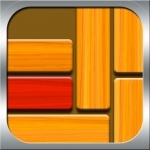
Unblock Me - Classic Block Puzzle Game
Games and Entertainment
App
Relax and start your brain workout with this smart and addictive puzzle game. Exercise your mind...
Purple Phoenix Games (2266 KP) rated Fort: Cats and Dogs Expansion in Tabletop Games
Feb 3, 2022
In the expansion review series, we take a look at a game expansion to discuss whether it is a necessary purchase/addition to one’s collection.
This breakdown is for the expansion for the hit game Fort, and this expansion titled Fort: Cats & Dogs Expansion.
This expansion adds a bunch of Dog cards, some Cat cards, and four Doghouse tiles. The Dog and Cat components belong to their respective modules, and the expansion can be played with either module or both simultaneously.
The Dogs module will add Dogs to players’ starting decks. When a Dog is played, their need (the text immediately below their picture) must be fulfilled before their special action is completed. They may also be used as their normal icon to be played with the base game actions. Most Dog cards are then discarded to the players’ Doghouse. However, if Dogs end up in a player’s Yard, at the beginning of their turn they must discard the Dog to the neighbor’s Doghouse. The player with the most Dogs in their Doghouse at the end of the game scores a cool seven points!
Cats, however, are little terrors and have no loyalty to their owner and their special abilities may be lent to whomever currently controls the Cat card. Cats are attracted to certain players based on which cards are present in their Yard at the end of their turn. It is then that the Cat card moves to the player’s tableau and can offer ongoing effects. The other players may then attempt to lure the Cat card to their own Yards at the end of their turns as well. Players score more points at the end of the game for having more Cats attracted to their Yard.
In my opinion Fort did not need any expansions that change the game. However, after adding Cats & Dogs to my game I found that another level of attention must be paid to each turn if you wish to score these extra bonus points. For example, should a player monopolize all the Cats and also have the most Dogs, that will score them 17 bonus points at the end of the game! That is certainly nothing to sniff at. The cards feature great art, again by Kyle Ferrin, and the Doghouses are nice cardboard tiles. I still most certainly enjoy playing vanilla Fort, but I think that with other gamers who are familiar with the base game I will almost always include both Cats & Dogs modules in my games.
Official recommendation: If you are a fan of Fort, as we all are, then adding in Cats & Dogs may spice up your game for you. However, if you are a fan of Fort as is, then this is certainly not a must-have. I thoroughly enjoy this expansion, and like I mentioned – will probably always be adding it into my games, but Fort definitely stands on its own. It is a luxury expansion, yes, but it is also very affordable. So pick it up the next time you are filling your board game carts. I recommend it highly, and the value added far outweighs the cost for this reviewer. MORE FORT!!
This breakdown is for the expansion for the hit game Fort, and this expansion titled Fort: Cats & Dogs Expansion.
This expansion adds a bunch of Dog cards, some Cat cards, and four Doghouse tiles. The Dog and Cat components belong to their respective modules, and the expansion can be played with either module or both simultaneously.
The Dogs module will add Dogs to players’ starting decks. When a Dog is played, their need (the text immediately below their picture) must be fulfilled before their special action is completed. They may also be used as their normal icon to be played with the base game actions. Most Dog cards are then discarded to the players’ Doghouse. However, if Dogs end up in a player’s Yard, at the beginning of their turn they must discard the Dog to the neighbor’s Doghouse. The player with the most Dogs in their Doghouse at the end of the game scores a cool seven points!
Cats, however, are little terrors and have no loyalty to their owner and their special abilities may be lent to whomever currently controls the Cat card. Cats are attracted to certain players based on which cards are present in their Yard at the end of their turn. It is then that the Cat card moves to the player’s tableau and can offer ongoing effects. The other players may then attempt to lure the Cat card to their own Yards at the end of their turns as well. Players score more points at the end of the game for having more Cats attracted to their Yard.
In my opinion Fort did not need any expansions that change the game. However, after adding Cats & Dogs to my game I found that another level of attention must be paid to each turn if you wish to score these extra bonus points. For example, should a player monopolize all the Cats and also have the most Dogs, that will score them 17 bonus points at the end of the game! That is certainly nothing to sniff at. The cards feature great art, again by Kyle Ferrin, and the Doghouses are nice cardboard tiles. I still most certainly enjoy playing vanilla Fort, but I think that with other gamers who are familiar with the base game I will almost always include both Cats & Dogs modules in my games.
Official recommendation: If you are a fan of Fort, as we all are, then adding in Cats & Dogs may spice up your game for you. However, if you are a fan of Fort as is, then this is certainly not a must-have. I thoroughly enjoy this expansion, and like I mentioned – will probably always be adding it into my games, but Fort definitely stands on its own. It is a luxury expansion, yes, but it is also very affordable. So pick it up the next time you are filling your board game carts. I recommend it highly, and the value added far outweighs the cost for this reviewer. MORE FORT!!

